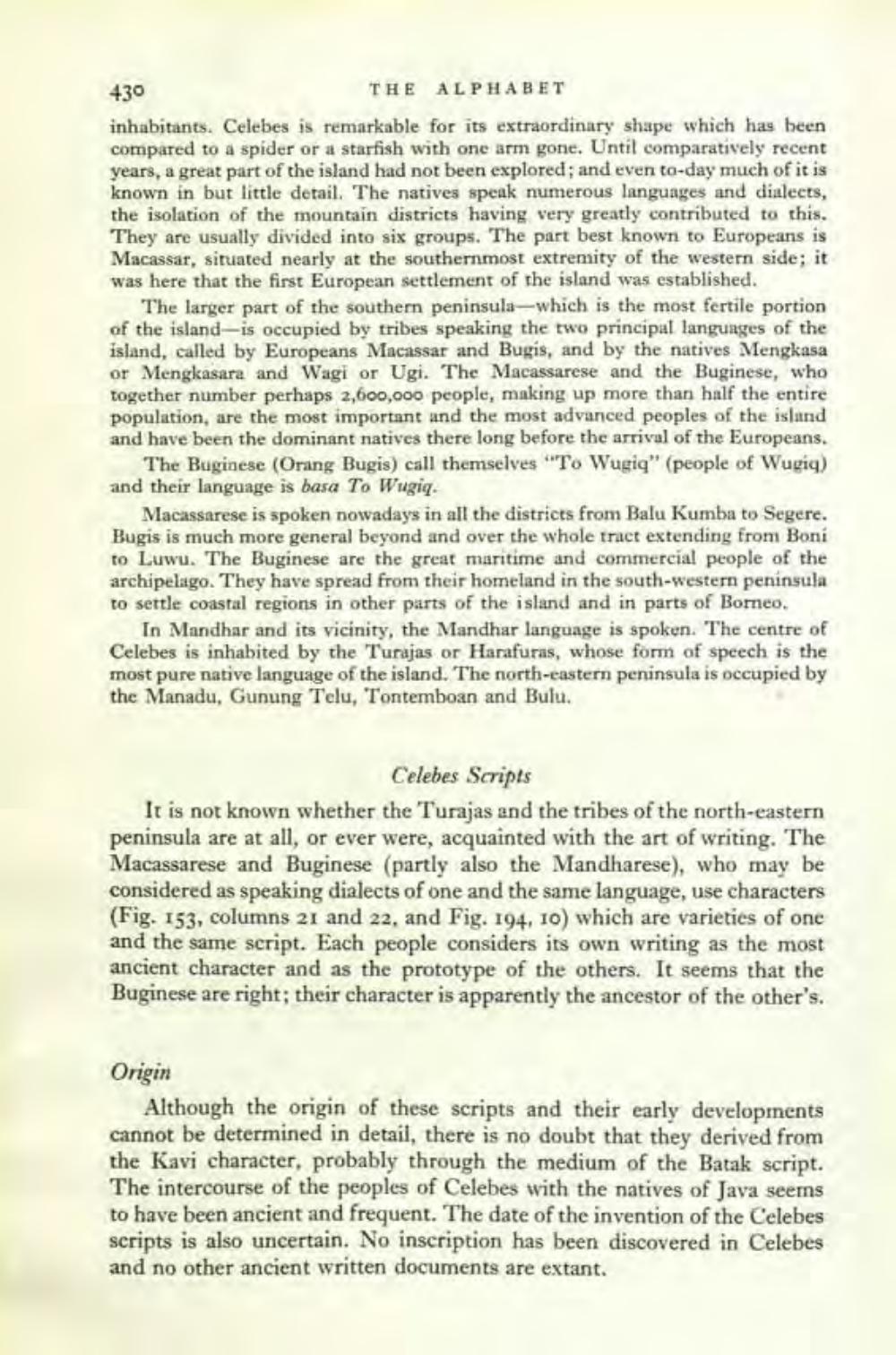________________
430
THE ALPHABET
inhabitants. Celebes is remarkable for its extraordinary shape which has been compared to a spider or a starfish with one arm gone. Until comparatively recent years, a great part of the island had not been explored; and even to-day much of it is known in but little detail. The natives speak numerous languages and dialects, the isolation of the mountain districts having very greatly contributed to this. They are usually divided into six groups. The part best known to Europeans is Macassar, situated nearly at the southernmost extremity of the western side; it was here that the first European settlement of the island was established.
The larger part of the southern peninsula-which is the most fertile portion of the island-is occupied by tribes speaking the two principal languages of the island, called by Europeans Macassar and Bugis, and by the natives Mengkasa or Mengkasara and Wagi or Ugi. The Macassarese and the Buginese, who together number perhaps 2,600,000 people, making up more than half the entire population, are the most important and the most advanced peoples of the island and have been the dominant natives there long before the arrival of the Europeans.
The Buginese (Orang Bugis) call themselves "To Wugiq" (people of Wugiq) and their language is basa To Wugiq.
Macassarese is spoken nowadays in all the districts from Balu Kumba to Segere. Bugis is much more general beyond and over the whole tract extending from Boni to Luwu. The Buginese are the great maritime and commercial people of the archipelago. They have spread from their homeland in the south-western peninsula to settle coastal regions in other parts of the island and in parts of Borneo.
In Mandhar and its vicinity, the Mandhar language is spoken. The centre of Celebes is inhabited by the Turajas or Harafuras, whose form of speech is the most pure native language of the island. The north-eastern peninsula is occupied by the Manadu, Gunung Telu, Tontemboan and Bulu.
Celebes Scripts
It is not known whether the Turajas and the tribes of the north-eastern peninsula are at all, or ever were, acquainted with the art of writing. The Macassarese and Buginese (partly also the Mandharese), who may be considered as speaking dialects of one and the same language, use characters (Fig. 153, columns 21 and 22, and Fig. 194, 10) which are varieties of one and the same script. Each people considers its own writing as the most ancient character and as the prototype of the others. It seems that the Buginese are right; their character is apparently the ancestor of the other's.
Origin
Although the origin of these scripts and their early developments cannot be determined in detail, there is no doubt that they derived from the Kavi character, probably through the medium of the Batak script. The intercourse of the peoples of Celebes with the natives of Java seems to have been ancient and frequent. The date of the invention of the Celebes scripts is also uncertain. No inscription has been discovered in Celebes and no other ancient written documents are extant.




